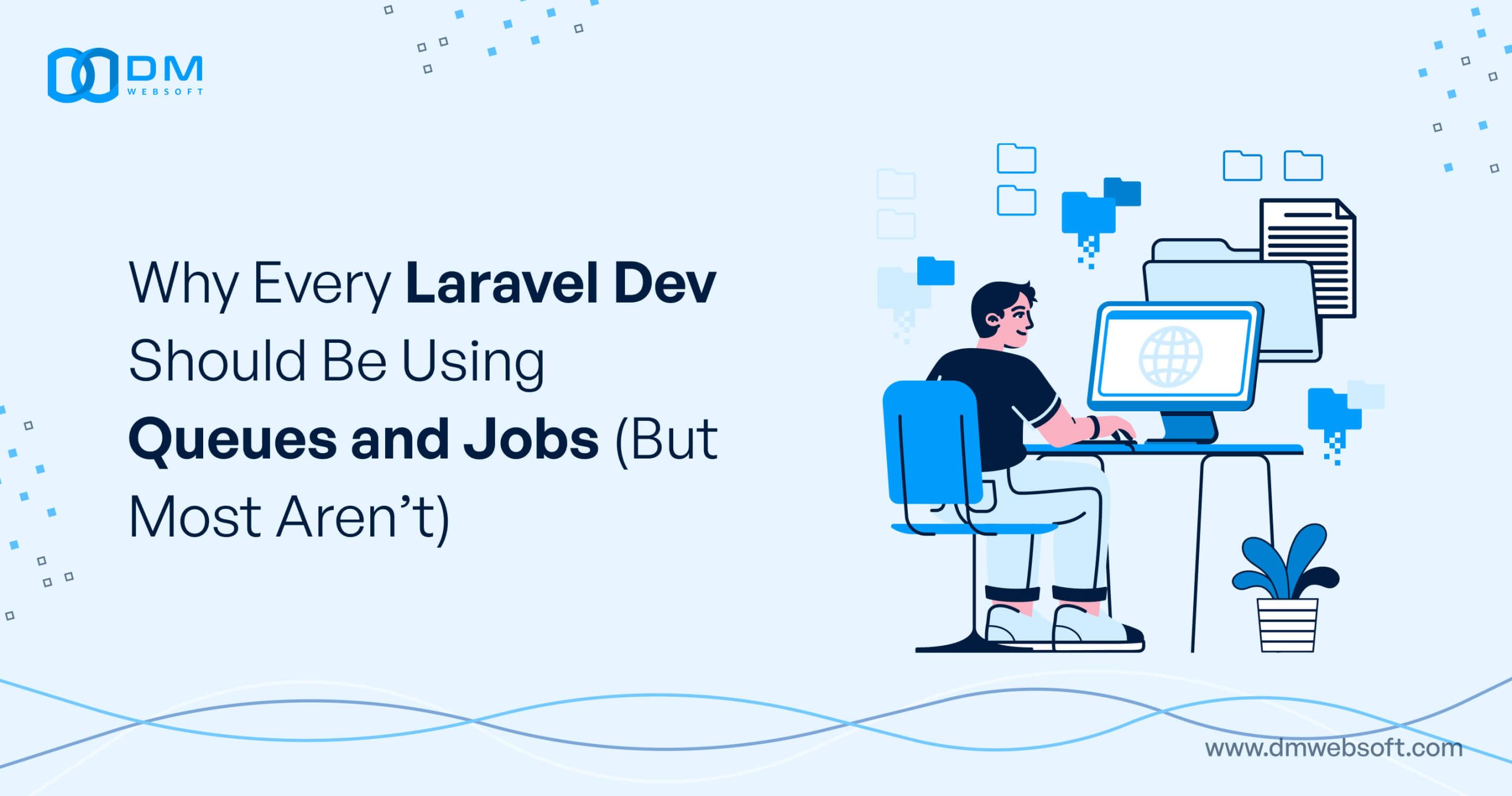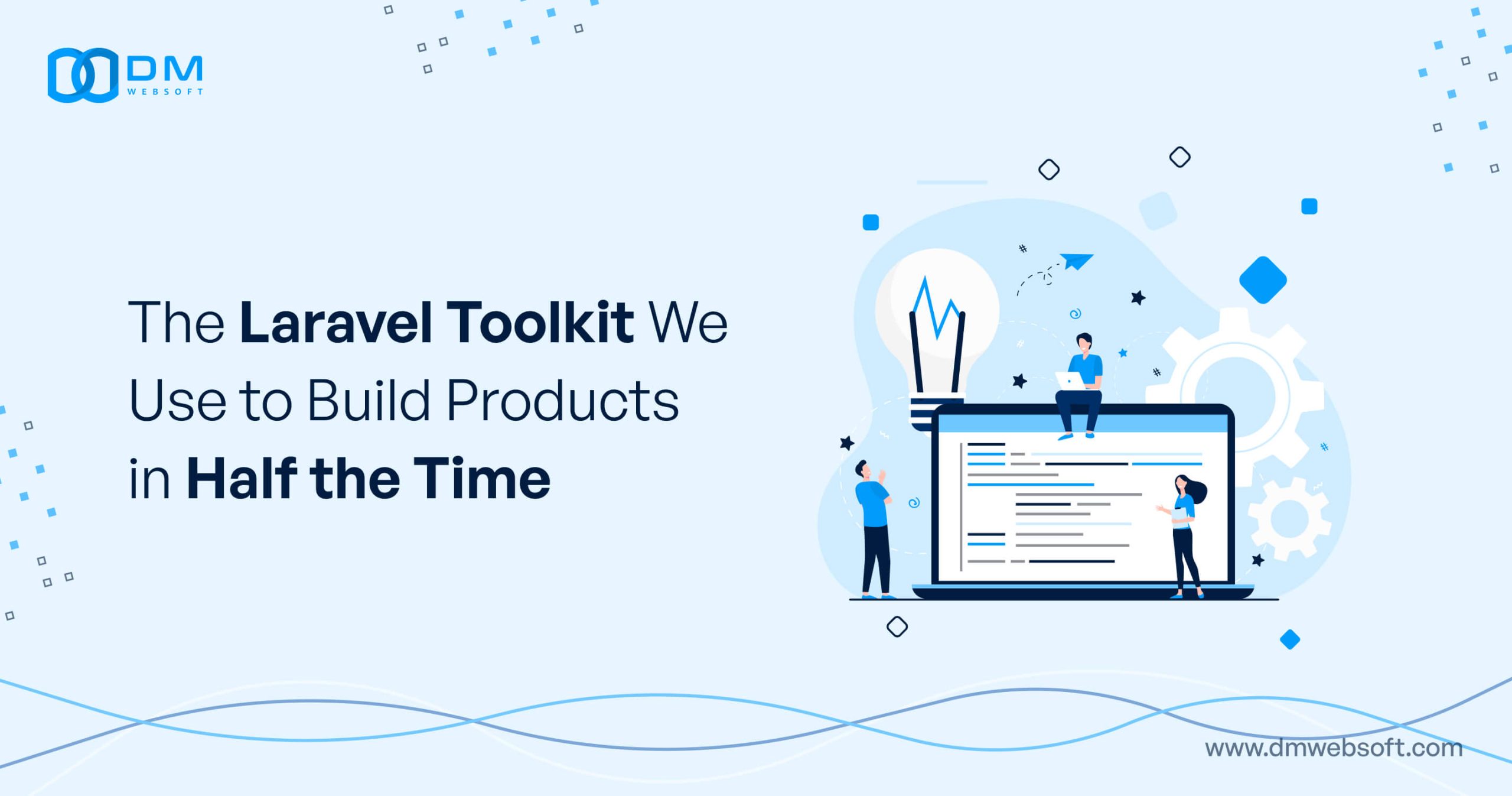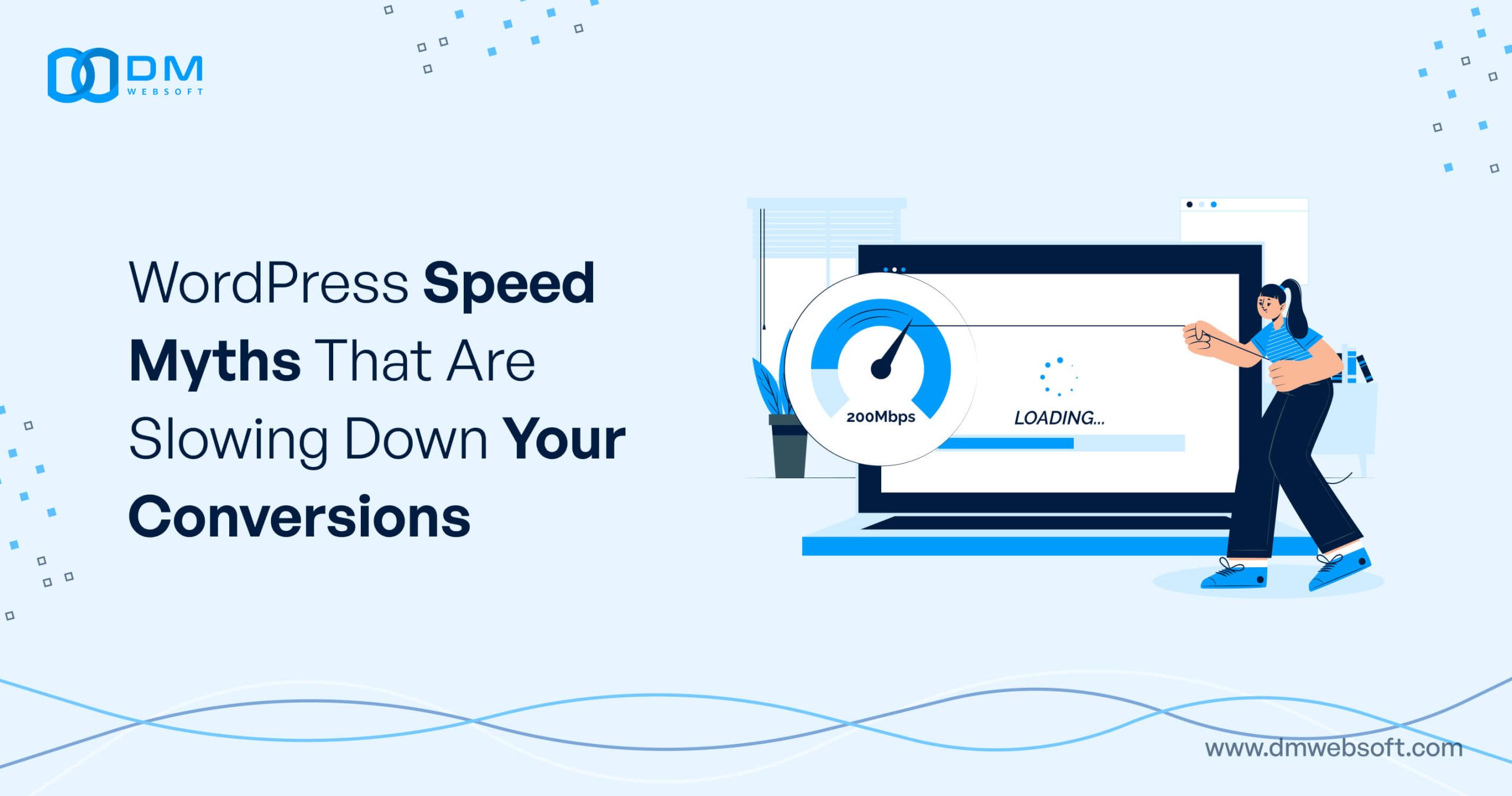DM WebSoft LLP exceeded our expectations! Their seasoned team of experts delivered a website that perfectly captures our brand essence. Their 15+ years of experience truly shine through in their exceptional web development skills.
Building Real-Time Web Applications with WebSockets and Server-Sent Events (SSE)

TABLE OF CONTENT
Get in Touch
Introduction: The Coming of Real-Time Web Apps
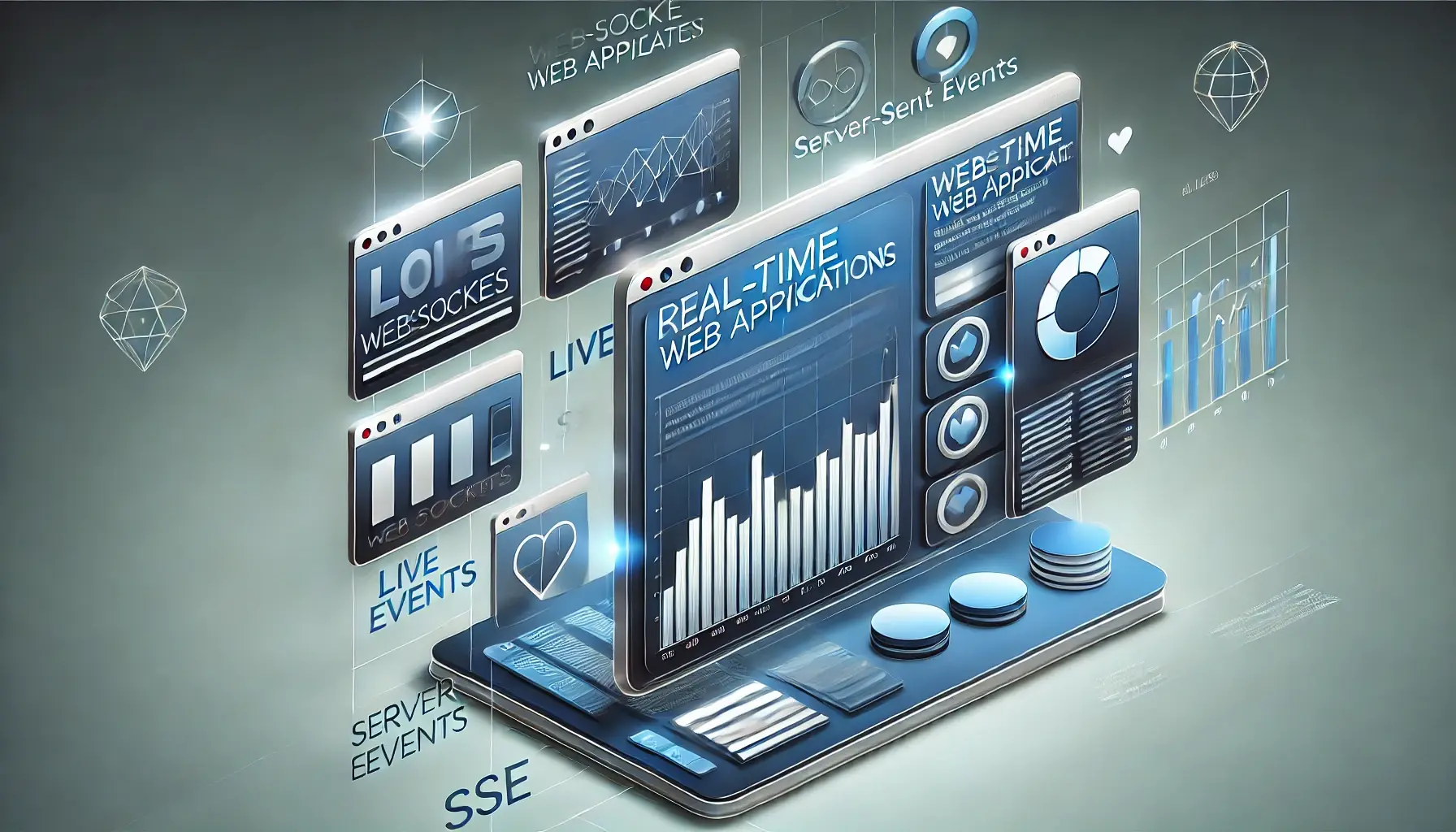
More than ever before, the actual demand for web applications that run in real time is high, considering the fast digital era. Users have come to expect updates, live interactions, and data streaming across platforms as they interact with apps and online content. Users now expect instant updates, live interactions, and seamlessly streamed data—from a financial dashboard app showing real-time stock prices, a gaming platform making multiplayer experience seamless, to a social media app alerting users in real time.
One of the big pushes for real-time functionality came with the development of WebSockets and Server-Sent Events (SSE) technologies. These technologies enable developers to build dynamic, real-time web applications that can push data to users as it happens, without a user having to refresh a page in their browser or having to wait for periodic updates.
But how do WebSockets and SSE become so powerful? Unlike traditional methods such as AJAX or even long polling, which continuously request the server, it offers a very persistent connection between the client and server. This justifies that after the connection is established, data can flow liberally and immediately, therefore making the experience so much more efficient and responsive for the user.
At DM WebSoft LLP, we work with these next-generation technologies to create your custom real-time web application based on your business requirements. We help in creating better user engagement through live data feeds that will certainly enhance the experience for your customers. We are backed up by a team of experts in development.
As we would proceed further with this blog, we will try to investigate more of the technical details on WebSockets and SSE, compare them with traditional methods, and finally conclude their practical use in different industries. You will also find out how DM WebSoft LLP can be your partner to get the edge over your competitors by working with these technologies.
In the next sections, we break down the essentials of real-time web development, draw lessons from the markets, and make useful takeaways that help implement WebSockets and SSE in your projects. You will have full knowledge, by the end of this post, of how such technologies can drive meaning into the transformation of your web applications to guarantee success in this competitive digital space.
Understanding WebSockets and Server-Sent Events (SSE)
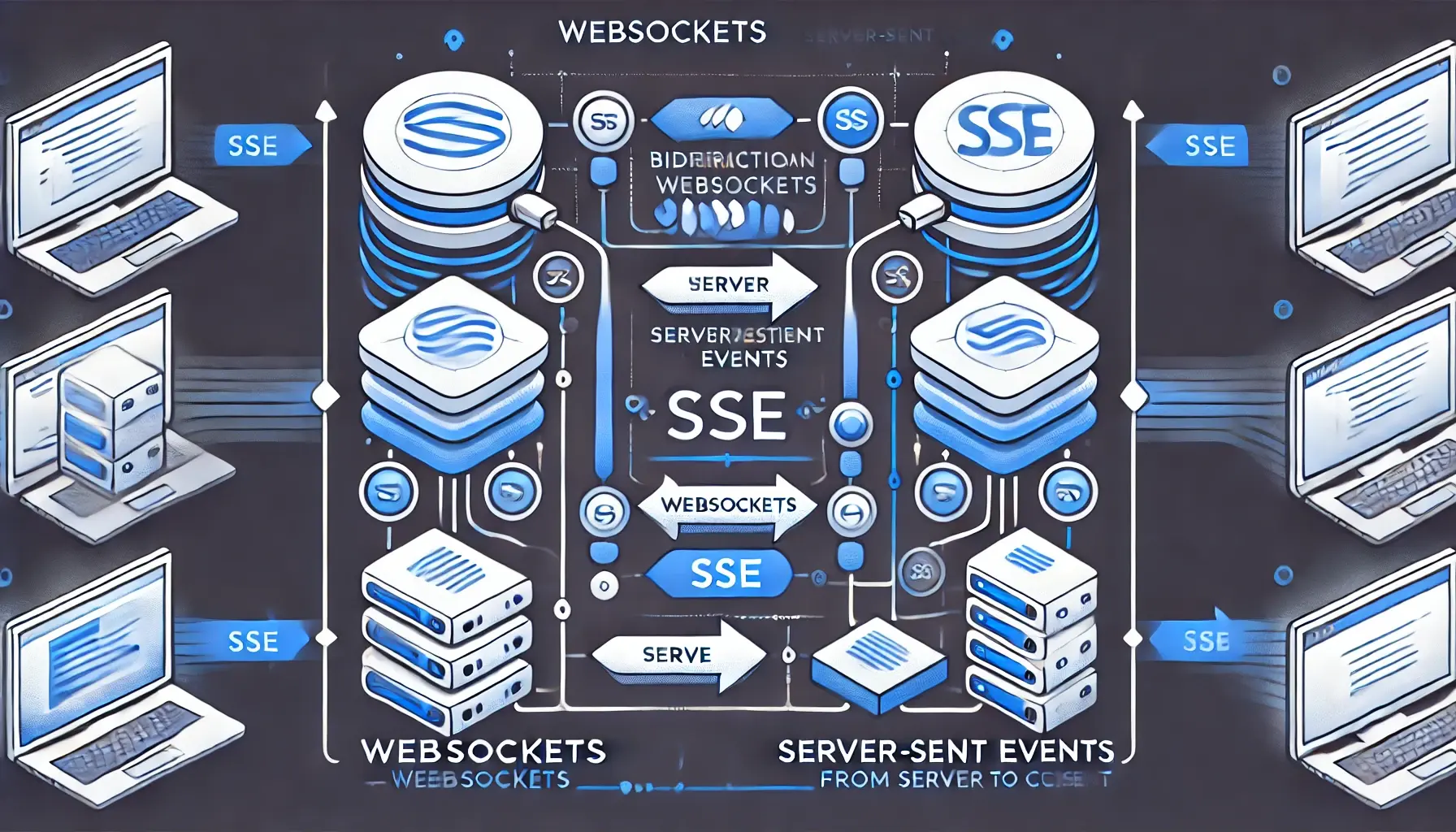
Two of the most significant technologies for real-time web applications are WebSockets and Server-Sent Events. Both of them allow dynamic two-way communication between the client and server, but they do it differently from each other.
What are WebSockets?
WebSockets is a full-duplex protocol, meaning two-way communication between the client and the server over a single long-lived connection. In contrast to ordinary HTTP requests, which are unidirectional, WebSockets add bidirectional capabilities: the server may also send data at will without having to first establish a connection to a client that is reaching out. Messages from the client can be sent and received from the server and vice versa at any time without the need to constantly reopen connections.
WebSockets are wonderful not only in their ability to carry real-time data but also with minimal latency. This makes them ideally suited for apps that have very fast data exchange, such as online gaming, live chat, and financial tickers. For example, the live trading platform could serve its users with instant stock price updates at the user’s end through the use of WebSockets to make sure that they always have the most current information at their disposal.
At DM WebSoft LLP, we leverage the WebSockets to create responsive and effective real-time application that can handle voluminous data and user interaction. Our experience in WebSockets development guarantees your application will leave users more than satisfied.
What are Server-Sent Events (SSE)?
The other method of real-time communication is through Server-Sent Events. SSE is a standard for pushing updates from server to client. However, unlike WebSockets, communication is unidirectional: once a connection is established, the server is free to send updates to the client without its initiation.
SSE can be very useful for applications where the server is to send real-time updates to the client, but the client does not really have to send data back in real time. For example, it is quite common to use SSE in news feeds, social media notifications, or live scores in sports apps; updates are required to be pushed to users as they happen.
One very valuable advantage of SSE is that it is simple and natively supported in modern web browsers. In addition, the connections for SSE behave much better when it comes to a networking environment with high latency or limited bandwidth, due to elimination of the overhead from setting up and tearing down many connections.
At DM WebSoft LLP, we understand that the power of SSE lies in certain use cases where constant real-time updates are required, but bidirectional communication is not. Our team can help advise you on what technology to go with to suit your application needs—either SSE or WebSockets, and, for that matter, both.
WebSockets vs. SSE: Which is Right for Your Application?
The choice between WebSockets and SSE depends on the application requirements. If an application needs to deal with real-time two-way communication without much latency, then obviously WebSockets are the way to go. On the other hand, if your application mostly needs to receive updates from the server with minimal overhead, consider using SSE.
Informed decision making is really important, so getting to know strengths and limitations of each technology. At DM WebSoft LLP, we guide you properly for choosing the perfect tools according to your project, letting your real-time web applications turn both powerful and efficient.
In the following section, we will address the significance of real-time web applications and why they are gaining prominence in many applications.
The Significance of Real-Time Web Applications

The demand for instant, on-demand access to information in today’s connected world has quite literally given birth to real-time web applications. They’re not just trends; applications have become quite indispensable in many industries. From financial services and healthcare, through gaming and social media, all user expectations and business operation perspectives have changed towards delivering live data.
Why Real-Time?
The need for immediacy motivates real-time web applications. Users have no desire to refresh their browsers or wait for periodic updates; they expect data to be available exactly at the moment it changes. You can clearly see the demand in those very businesses where every second counts.
For example, in the financial industry, real-time data is highly important. Traders need updates about stock prices in real time to take decisions on the spot. A few seconds of delay can mean huge financial loss. WebSockets and Server-Sent Events (SSE) are the two primary technologies behind these real-time applications, which keep pushing data to the user as soon as it is available, without any delay.
In healthcare, for example, a situation involving real-time monitoring could be a matter of life and death. Real-time applications that monitor the human body’s vital signs require an immediate update of actions to the healthcare providers in order to take immediate action themselves. This is a good case where the SSE protocol finds most of its use and happens to need one-way communication from the server to the client, ensuring a highly efficient mechanism.
Real-World Applications
The possibilities that real-time web applications hold are limitless and can be applied to areas extending far beyond just finance and health. Consider the following:
- Gaming: Real-time communication is the backbone of online multiplayer games. Since actions and movements in the game need to be seen as they happen, most developers make use of WebSockets to enable low-latency, bidirectional communication.
- Social Media: Through social media channels, including Twitter and Facebook, users can receive live notifications and updates at any time, anywhere. SSE is actively used to conduct these real-time status updates effectively, particularly in one-way dominated communications.
- E-commerce: Real-time inventory updates, live customer support, and dynamic pricing are just some of the ways that e-commerce sites enhance user experiences on the fly. WebSockets do their part in providing a responsive and engaging environment for these platforms by keeping a constant connection with users.
These are just a few examples, but they demonstrate how flexible and versatile real-time web applications need to be within the current digital space. Businesses advance to more progressive points, with growing dependencies on technologies like WebSockets and SSE.
At DM WebSoft LLP, we realize the importance of real-time data to modern web applications. As a team, we have a lot of experience in developing custom solutions with WebSockets and SSE based on specific requirements. We develop applications in the finance, health, gaming, and every other industry with immediacy and responsiveness that your users expect.
The next section moves on to some of the technical considerations and challenges when you actually implement WebSockets and SSE in your web applications. Hopefully, you will be equipped at that point to make good choices for your projects.
Technical Concerns and Challenges
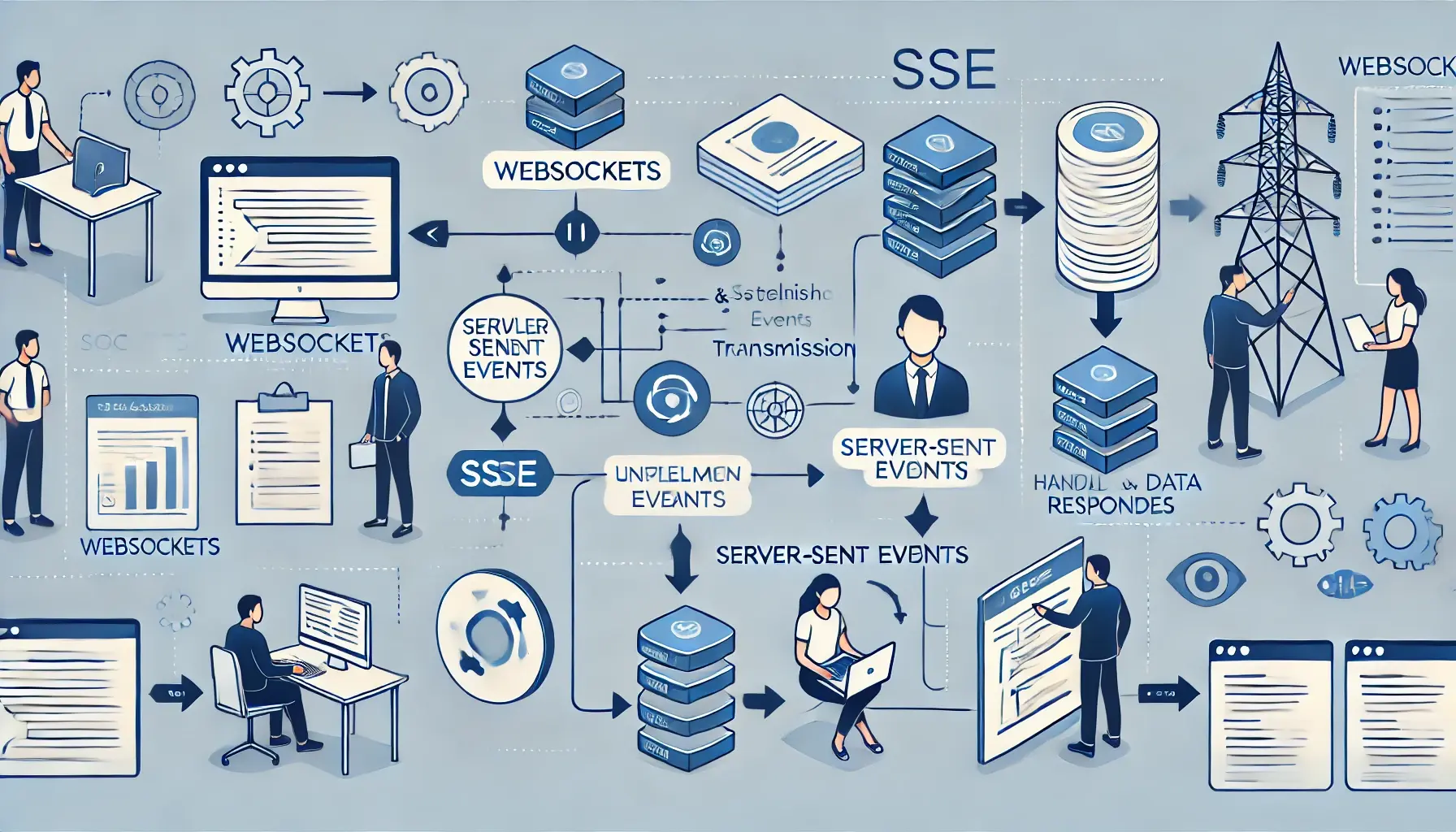
WebSockets and Server-Sent Events in web applications will significantly improve real-time communication but do come with their challenges, and a few considerations need to be taken care of technically. Knowledge of this information is, therefore, part of great importance when designing an application that lives up to the users’ expectations.
WebSockets in Web Applications
WebSockets allow for two-way, full-duplex communication between the client and server with a persistent connection in real time. Here is a simple, step-by-step implementation of WebSockets in web applications:
Making a Connection: The first step in using WebSockets is the establishment of a connection between the client and the server. It is made when the client initiates a handshake request to the server, which upon approval sets up a persistent connection.
It is unlike traditional HTTP in that it keeps this connection open to allow free data flow between the client and the server.
Keywords: WebSockets: How to Use, WebSocket Implementation for Live Updates, WebSockets for Web Development
Data Transmission: Once the initial client-server handshake is done, they can send and receive messages at any point in time. This is what makes WebSockets particularly powerful for applications that require instant data exchange, such as live chats or real-time analytics dashboards.
The fact that messages themselves are also generally dispatched as small, efficient packets ensures low latency in message distribution and reduces the amount of load put on the server.
Handling server responses: This enables the server to push the update down to the client as soon as the new data arrives, and therefore eliminates the client’s need to keep polling the server for updates.
This makes the application much more responsive and efficient for real-time data applications in particular.
Challenges
Scalability: It becomes a great challenge to take care of thousands of open WebSocket connections, especially if there are many concurrent users.
Security: Secure communication by using WebSockets takes very cautious implementation, more specifically to issues of authentication and data encryption.
At DM WebSoft LLP, we have the experience and skills to develop WebSockets in a manner such that your applications are not only real-time but also secure and scalable. We guide you through the nitty-gritty of WebSocket implementation with solutions customized to your specific needs.
Implementing Server-Sent Events (SSE) in Web Apps
Server-Sent Events (SSE) allow you to use an easier, even primitive, way of pushing live data from the server end to the client. Here is what SSE might look like in your application:
Establishing a Connection: The client initiates an SSE connection by sending an HTTP request to the server. The server maintains the connection open and responds with updates upon newly available data.
It’s a one-way communication stream from server to client, as opposed to WebSockets.
Keywords: SSE advantages, Building scalable real-time applications with SSE
Data Transfer: The server sends the updates as a continuous stream of events. The client receives the events and processes them as they arrive, usually rendering the updated data to the user.
This makes SSE ideal for applications in which the client needs to receive real-time updates but does not need to send data back to the server immediately.
Handling Updates: Clients can handle server-sent events with plain JavaScript, so the introduction into web applications is easy and unobtrusive.
SSE works well in a high network latency scenario, as the overhead of re-establishment for connections is minimized.
Challenges
Browser support: SSE is supported by most modern browsers, but it is not universal on every platform. Fallback solutions should be implemented to ensure that the application is widely compatible.
Limited Use Cases: Since SSE is supported only one way, applications that require the client to be able to communicate with the server in real time are not a good fit.
At DM WebSoft LLP, we take advantage of SSE for real-time updates but with the least overhead for applications. Our team will make it their business to provide an implementation for SSE that is efficient, reliable, and fully tailored to your business requirements.
Security Considerations
Both WebSockets and SSE are supposed to be secure technologies, and they deal with security issues to protect data integrity and ensure safe communication. This may mean secure WebSocket protocols (wss://) should be followed through the use of encryption to guarantee proper authentication mechanisms.
In the niche of secure real-time web development, DM WebSoft LLP has some really good experts on board. With DM WebSoft LLP, we do really care about your application security; your data will be safe and secure with us while delivering high performance in real time to meet your users’ needs.
In the next chapter, we compare WebSockets and SSE with traditional methods like AJAX and long polling, so you get an idea of what is possible and where these methods come up short.
WebSockets and SSE vs. Traditional Methods

There are a number of available options for developers to bring real-time functionality into web applications. This choice lies between WebSockets, Server-Sent Events (SSE), AJAX, and long polling based on the specific requirements—mainly, communication flow, efficiency, and scalability—of the application. This is where we compare these methods to help you know the key differences between them and find out which one is the most suitable for your project.
WebSockets
Unleashing the Power of Bi-direction WebSockets are the default when it comes to real-time, bidirectional solutions.
A WebSocket connection is left open, through which both the client and server can send messages at will. So, in very efficient cases, WebSockets are mostly used, where data exchange is required very frequently; examples include live chats, multiplayer games, and financial trading platforms.
- Communication Flow: Full-duplex, meaning at any single time both the client and server can send data.
- Efficiency: High efficiency with minimal overhead once the connection is established.
- Scalability: It will handle very many concurrent connections, but it needs prudent management for it to be scalable.
- Use Cases: Online gaming, live trading platforms, collaborative tools, and live customer support.
- Keywords: WebSockets, WebSocket implementation for live updates, Real-time web applications
Server-Sent Events (SSE)
Simple and Effective One-Way Messaging Updates Server-Sent Events (SSE) offer a simpler approach to real-time communication, pushing updates unidirectionally from server to client. Unlike WebSockets, SSE is unidirectional, which can be best used for applications where just the data update is required on the client side—applications like news feeds, live scoreboards, or stock market tickers.
- Communication Flow: Unidirectional, from server to client.
- Efficiency: More effective than polling methods, with less latency and smaller server loads.
- Scalability: Easier to scale due to simpler architecture, but allows one-way communication only.
- Use Cases: News Feeds, Social Media Notifications, Live Sports Scores, Financial Data Updates.
- Keywords: Server-Sent Events, How to build a scalable real-time app with SSE, SSE vs Websockets
AJAX
Classic but Limited AJAX has been an essential component in web development these past many years. It entails small data exchanges that take place between the user’s browsing interface and a server in changing a page without refreshing it.
Nevertheless, it is based on consecutive requests from clients to enable poll checking for updates; this thing may lead to inefficiency and wastage of server resources.
- Communication Flow: Unidirectional, typically initiated by the client.
- Efficiency: lesser since there is a need for repeated requests that incurs additional latency and server load.
- Scalability: High-traffic applications are hard to scale because of the many requests.
- Application Scenarios: form submission, on-demand data retrieval, and dynamic loading of content.
- Keywords: AJAX, AJAX Polling, Regular Web development methodologies
Long Polling
A Workaround with Limitations Long polling is a way of emulating real-time communication, where the request of a client is kept open to the server until an update is available. When the server answers, the client instantly makes another request, which gives an illusion of a constant connection.
This approach can deliver updates in near real time, but it is resource-intensive and in all respects inefficient as the number of users grows.
- Communication Flow: Unidirectional, initiated by the client, with server responses delayed until data is available.
- Efficiency: More effective than basic polling but very overhead-intensive and thus latency-inducing.
- Scalability: Can be difficult to achieve in the right scaling, especially in applications supporting a massive user base.
- Use Cases: Applications that do not require full real-time capability but just periodic updating; they are simple, for example, chat applications.
- Keywords: long polling, long polling vs WebSockets, real-time updates
Why Use Websockets or SSE Over Traditional Methods?
While AJAX and long polling do have their place in Web development, they do not ideally serve the web developer’s requirements for modern real-time web applications. WebSockets and SSE give better, efficient, and more scalable solutions to meet the expectations today’s users have of instant, responsive interaction.
At DM WebSoft LLP, we believe in helping businesses shift from traditional to the most advanced real-time technologies, like WebSockets and SSE. Our team of professionals can help you choose the right approach based on your application needs to ensure users receive the best experience while increasing the performance and scalability of your systems. In the following section, we present market trends and future developments in the real-time web applications space that will provide an insight into how these technologies will shape up in the future and the opportunity these have created for businesses.
Conclusion: Welcome the Future Today with Real-Time Web Apps

Development of real-time applications using WebSockets and Server-Sent Events (SSE) is a must for modern digital application development. Real-time web applications nowadays have the capability to do multiple operations—starting from live updates up to improving user engagement, effectiveness in the business. All these imply creating modern high-performance, responsive, and engaging apps that meet today’s users’ expectations in businesses.
Key takeaway:
WebSockets and SSE each have their strong point in the arena of real-time communication. While WebSockets offer bidirectional, low-latency communication ideal for applications with constant data exchange, SSE is perfect to push real-time updates from server to client in an easy, efficient way.
Scalability and Security: Your business is guaranteed to grow, and when that happens, your applications need to be scalable. DM WebSoft LLP guarantees the development of all your real-time applications with scalability architecture, using recent security practices for data and user protection.
Future-ready Solutions: Fast development in technology keeps your organization ahead of time with innovation. When you partner with DM WebSoft LLP, you have access to contemporary solutions to meet your current requirements and be prepared for all future challenges.
At DM WebSoft LLP, it is our commitment to help you harness the real potential of Web Technologies pertaining to real-time.We are experts in WebSockets, SSE, and the development of custom web applications that put your business ahead in the rough digital competitive world. Contact us whether you want to improve user engagement, enhance operational efficiency, or get a competitive edge.
Closing Thoughts: Very critical is the selection of technology and the right partner in success for your real-time web applications. Based on how powerful the capabilities in WebSockets and SSE are effective technologies, therefore, it is a strong technology.
With DM WebSoft LLP, you can be assured that your applications will be built with the kind of expertise, scalability, and security required to succeed. Contact us today so we can work with you in shaping the future of your web application. Together, we will create solutions that meet—not just satisfy—your needs.
WebSockets enable real-time, bidirectional communication between clients and servers, perfect for applications like live chat and online gaming.
SSE provides unidirectional communication from server to client, ideal for pushing live updates like news feeds and notifications.
Yes, WebSockets can be secured using the wss:// protocol, ensuring encrypted and safe data transmission.
Absolutely, with the right architecture, technologies like WebSockets and SSE can handle high volumes of traffic efficiently.
DM WebSoft LLP specializes in building custom, scalable, and secure real-time web applications tailored to your business needs.
Get Started Now !
What’s the Process ?
Request a Call
Consultation Meeting
Crafting a Tailored Proposal
Get Started Now !
Real Stories, Real Results. Discover What Our Clients Say

Working with DM WebSoft LLP was a game-changer for our business. Their technical prowess and innovative solutions transformed our online presence. A highly recommended web development agency with a stellar track record.

We are thrilled with the results DM WebSoft LLP delivered. Their deep understanding of web development coupled with years of expertise ensured a seamless and visually stunning website. True professionals!

In a digital age where first impressions matter, DM WebSoft LLP crafted a website that speaks volumes. The team’s attention to detail and commitment to quality set them apart. Thank you for making our vision a reality.

DM WebSoft LLP’s team demonstrated unparalleled expertise. Their ability to navigate complex technical challenges with ease is truly commendable. Choosing them for our web development needs was the best decision.

Exceptional service, unmatched skills! DM WebSoft LLP stands out as a leading web development agency. Their collaborative approach and commitment to excellence make them our go-to partner for all things web-related.

DM WebSoft LLP turned our ideas into a digital masterpiece. The seamless communication and timely delivery of our project showcased their professionalism. Highly impressed with the level of creativity and skill.

Our experience with DM WebSoft LLP was nothing short of amazing. From concept to execution, their team provided top-notch web development services. A reliable partner for businesses looking to elevate their online presence.

DM WebSoft LLP’s team of tech experts is second to none. Their wealth of experience reflects in the quality of their work. Our website not only meets but exceeds industry standards, thanks to their dedication.

Choosing DM WebSoft LLP was the best investment for our web development needs. Their team’s proficiency, coupled with a customer-centric approach, made the entire process smooth and enjoyable. A pleasure to work with!



